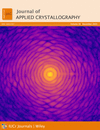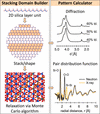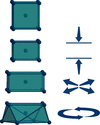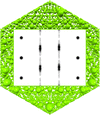issue contents
December 2023 issue

Cover illustration: Highlighting some recent developments in instrumentation and apparatus: the FALCON double-detector Laue diffractometer add-on for grain mapping at POLDI, Paul Scherrer Institute [Samothrakitis et al. (2023). J. Appl. Cryst. 56, 1792–1801]; an upgrade of the small-angle neutron scattering diffractometer SANS-J at JRR-3, Japan Atomic Energy Agency [Kumada et al. (2023). J. Appl. Cryst. 56, 1776–1783]; development of a D2O/H2O vapor generator for contrast-variation neutron scattering [Arima-Osonoi et al. (2023). J. Appl. Cryst. 56, 1802–1812]; and HETU, the high-resolution stress and texture neutron diffractometer at China Mianyang Research Reactor [Wang et al. (2023). J. Appl. Cryst. 56, 1674–1682].
editorial
 access
accessresearch papers
 access
accessA data-analysis round robin was performed using four real-world datasets to quantify the role of the human factor in analysis; the 46 responses show that the analyses by different researchers and laboratories may not be directly comparable, with large reporting inconsistencies in distribution widths and volume fractions. Several underlying causes for these inconsistencies are highlighted that can be addressed by the community.
 access
access access
access access
access access
access access
access access
accessteaching and education
 access
accesscomputer programs
 access
access access
accesslaboratory notes
crystallographers


 journal menu
journal menu
















































